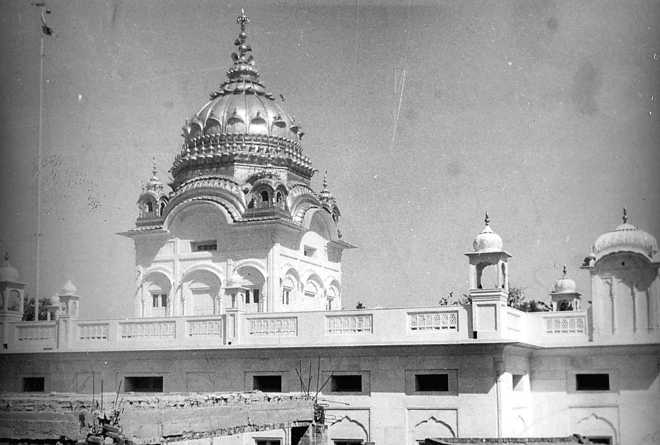
check point: The historic Darbar Sahib Gurdwara is just 4.5 km from the India-Pak border but tourists who visit it via Lahore have to travel some 100 km
Chaman Lal
The hug of two Jats — Navjot Sidhu and Qamar Bajwa — both in official positions, one from India and the other from Pakistan, one a Sikh Jat and the other a Muslim Jat (they proudly proclaimed it themselves), has created a furor across India. The event, however, has again brought into focus the long-pending socio-cultural-emotional issue of opening the Dera Baba Nanak border. The debate on open corridor to Kartarpur gurdwara, just 4.5 kilometers from Dera Baba Nanak border, refuses to reach a conclusion.
It is here that Guru Nanak spent the last 18 years of his life after his four travels, known in religious parlance as Udasis, and appointing his disciple Bhai Lehna — christened as Guru Angad Dev — as his successor. In doing so, the Guru ignored his own erudite scholar-son Sri Chand, who later set up his own Udasi sect. The gurdwara, known as Darbar Sahib Kartarpur, is built at the spot, where Guru Nanak passed away. Interestingly, just like his contemporary and popular poet Kabir, whose grave (maqbra) and samadhi, following both Muslim and Hindu traditions, are built at Maghar (Uttar Pradesh), Guru Nanak’s gurdwara, maqbra and samadhi are also built at the same complex. The visitors pay obeisance at all the three sites.
The gurdwara is just a few kilometers away from Dera Baba Nanak border. On the other hand, those who visit the shrine via Lahore have to travel 100 kilometers. The site is as important for followers of Guru Nanak as Nankana Sahib, his birth place. For a long time, though unofficially, easy access was allowed to the gurdwara from Dera Baba Nanak side itself. However, things changed after 1971.
One wonders that when in 1961, the Government of India exchanged a few villages with Pakistan in lieu of Hussainiwala National Martyrs Memorial — built in the memory of freedom fighters Bhagat Singh, Sukhdev and Rajguruwhy — why, at the same time, Kartarpur gurdwara site was not negotiated for? Most governments show liberal attitude in matters of religious sites, and likewise, Kartarpur gurdwara too did not become a debatable issue.
In 2000, after the then Prime Minister Atal Bihari Vajpayee’s Lahore visit, an understanding developed between both governments to facilitate an open corridor to Darbar Sahib Gurdwara in Kartarpur from the border site. Punjabi and Sikhs world over were overjoyed at the development. Everything, however, came to a halt as Indo-Pak relations soured later on and which stand at the worst position at this moment.
Many non-Punjabis or, for that matter, non-Bengalis cannot understand the complexity of cultural bonding between people who share the same language and culture, even when cleaved politically as different nations. One can see how emotionally Koreans responded when political leadership of both countries eased the tensions or how Germans reacted to each other when their dividing wall was demolished after the fall of Soviet Union.
Hyper nationalism of the Right wing is not going to impress Punjabis on both sides of the border. It is a complex affair between communities, bonded by cultural background, yet divided by politico-religious extremism. Punjab may have been divided geographically into two nations, yet in the minds and hearts of all Punjabis, Baba Nanak, Bulle Shah and Bhagat Singh cannot be divided by any geographical boundaries.
As a wanderer stung by the temptation of visiting historic monuments, I visited Dera Baba Nanak town and border. I also visited Kalanaur, the site of coronation of India’s great emperor Akbar. While delivering a lecture in Gurdaspur last year, I could feel the anguish of people who wanted to have an open corridor to the Darbar Sahib Gurdwara, which visitors watch through binoculars.
One also realises that former Prime Minister Manmohan Singh was right about solving issues with Pakistan. He said, “Borders should be made irrelevant”, and people should cross borders without any roadblock. As a first step, at least at the time of celebrating 550th birth anniversary of Guru Nanak Dev, let Dera Baba Nanak border become irrelevant. The corridor to Darbar Sahib Gurdwara should be opened for all times. Later, other borders should be opened for trade and mutual development of the culturally conjoined people of both countries.



























